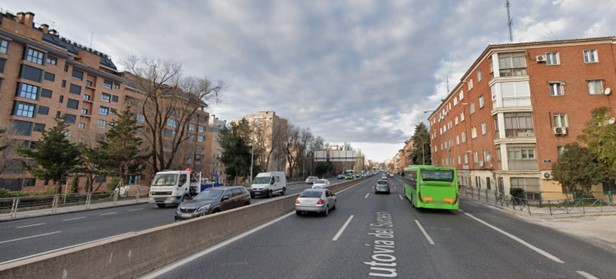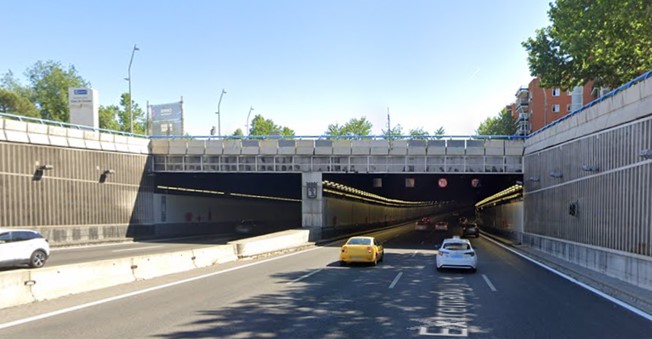Author: Alex Manuel De Sousa Correia Mendes
1. INTRODUCTION
This entry details the events that have led to the drafting of the construction project for the undergrounding of the southwest highway, also called A5, in the so-called execution plan for the southwest green corridor.
The purpose of the project is the undergrounding of the A-5 Southwest Highway in its urban section, between the end of the tunnel connecting with the M-30 and the area around Avenida de los Poblados, in order to try to definitively solve the problems of congestion, accidents, noise and atmospheric pollution and accessibility that exist in the area. The project also includes the subsequent thermoactivation of the underground area for energy use. This is also an action that seeks to improve the quality of life of the inhabitants of the area by modifying urban mobility by road, with the undergrounding eliminating the physical barrier posed by the current A5 infrastructure and promoting the connection and accessibility of the different neighborhoods in the area.

Figure 1 A5 Highway, Source Google maps
Considering the importance of the southwest highway, its growing traffic with an average daily intensity of 78,200 vehicles and the historical importance of the road as the one that connected the capital with a great variety of municipalities ending in Cáceres and also connecting with the Portuguese border, it was concluded that the undergrounding was the most viable and effective option to solve the mobility and quality of life problems of the inhabitants of the area.
2. HISTORICAL PROBLEM
On April 27, 2015, 1,550,576 square meters of Campamento land went on sale, with a buildability of 1,132,098 square meters, due to this the area became a point of interest for the population and investors, marking a point of important growth in the surrounding neighborhoods.
However, with the growth of the neighborhoods of La Latina, the heavy traffic congestion on the A5 became more and more noticeable, and it became a barrier not only for the proper social development of the area, but also a source of pollution and noise that, rather than enriching the surrounding areas, was a truncating factor for their growth.
When the first section of the Madrid River was opened underground, the first complaints from neighbors in the sections that did not benefit from these first actions were made, alleging that the Madrid River actions did not represent the culmination of the expected plan for the A5.

Figure 2 M30 connection tunnel, Source Google maps
For these reasons, the Community of Madrid launched the tender with which it stated that “With this action it is intended to move all traffic through an underground tunnel, which would improve the air quality of the area, mobility and on the other hand would provide this area with greater permeability through the environmental restoration of the green promenade of the southwest. For all of the above reasons, it is considered sufficiently justified the convenience of carrying out the work of burying the A-5 in its urban section. As a prior step to said construction, a construction project must be drawn up. The General Directorate of Mobility Infrastructure Planning has neither the means nor the technical personnel specialized in the matter, and therefore it is considered that the object of the present contract is suitable to meet the aforementioned needs.”
3. CONSEQUENCES OF SUBSOILING
First, this project will allow the recovery of valuable urban spaces. By burying the highway, land previously occupied by the elevated roadway will be freed up, providing opportunities for the development of green areas, parks, and the construction of housing and commercial spaces. This will not only improve the urban environment, but could also contribute to a higher quality of life for residents by providing recreation and living areas.
In addition, the undergrounding of the A5 highway in Madrid will significantly reduce noise and air pollution in the surrounding areas. Elevated highways often generate significant levels of noise and pollutant gas emissions, affecting the health of people living near them. By placing the highway underground, noise levels and exposure to air pollution will be reduced, which will have a positive impact on the health and well-being of the local population.
The undergrounding of the A5 highway could also improve mobility in the city. By eliminating the physical barriers created by the elevated highway, it will be possible to divide the flow of traffic in two: in the subway lane there will be two lanes for private vehicles plus one bus lane in each direction, while on the surface there will be only one lane in each direction for local bus traffic and vehicles from the area, thus creating a separate network in which vehicles traveling to the center of the capital or more distant areas can take the underground lane, while for local trips between municipalities they can go on the surface, This will greatly reduce congestion in the streets, which could mean a reactivation of the neighborhoods located farther away from the capital, in the same way the neighborhoods previously divided by the A5 will be unified by building a large green corridor between them, which will encourage activity between them and revalue the area.
Finally, adding the thermoactivation of the screens will generate a more sustainable transportation system because much of the electrical energy needed for heating and cooling the tunnel will be extracted directly from the ground in a cyclical process of clean, renewable energy. In summary, the undergrounding of the A5 highway in Madrid represents an opportunity to transform the city into a more livable, healthy and efficient place in terms of mobility.
